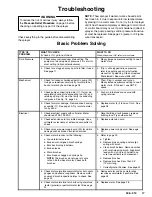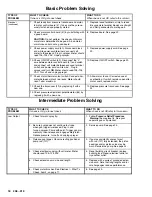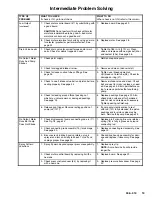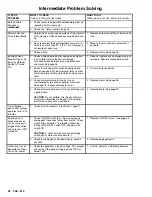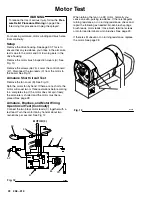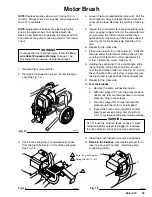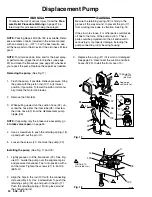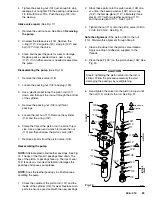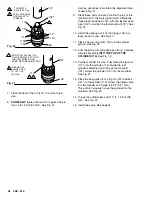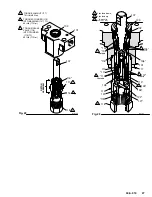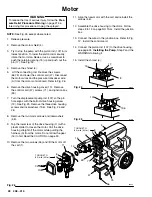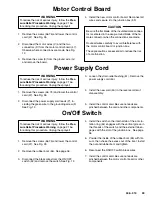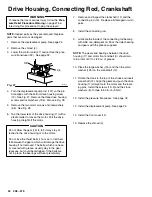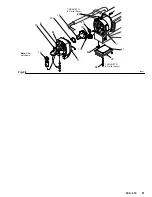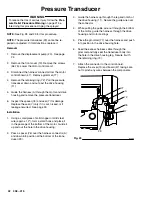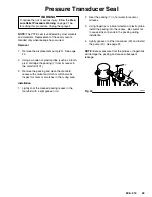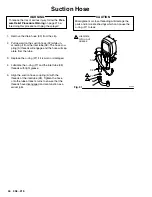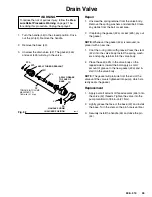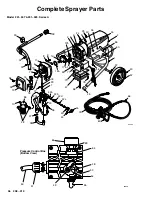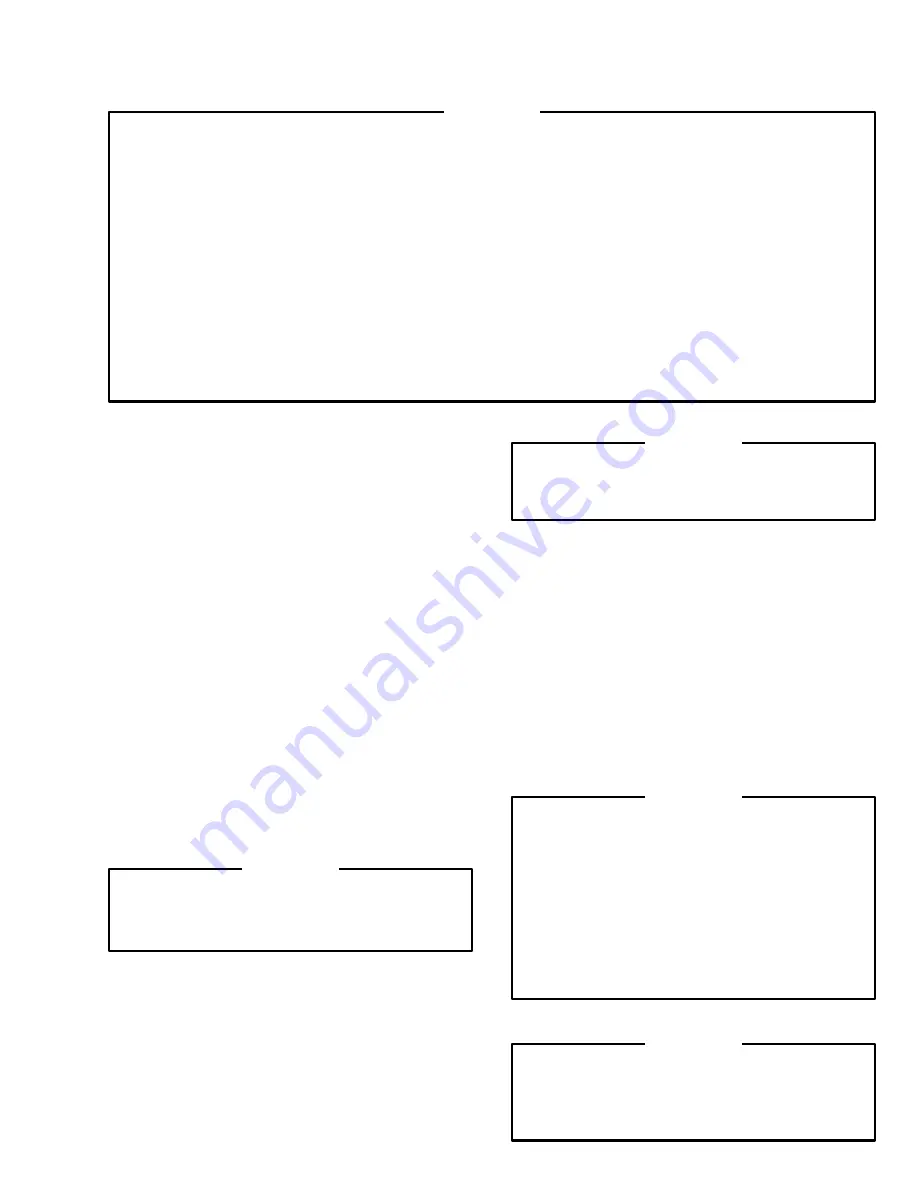
General Repair Information
WARNING
Pressure Relief Procedure
To reduce the risk of serious bodily injury, including
fluid injection, splashing fluid or solvent in the eyes or
on the skin, or injury from moving parts or electric
shock, always follow this procedure whenever you
shut off the sprayer, check or service any part of the
spray system, install, clean or change spray tips, and
whenever you stop spraying.
1. Engage the gun safety latch.
2. Turn the ON/OFF switch to OFF.
3. Unplug the power supply cord.
4. Disengage the gun safety latch. Hold a metal
part of the gun firmly to the side of a grounded
metal pail, and trigger the gun to relieve pres-
sure.
5. Engage the gun safety latch.
6. Open the pressure drain valve, having a con-
tainer ready to catch the drainage. Leave the
valve open until you are ready to spray again.
If you suspect that the spray tip or hose is completely
clogged, or that pressure has not been fully relieved
after following the steps above, VERY SLOWLY
loosen the tip guard retaining nut or hose coupling to
relieve pressure gradually, then loosen completely.
Now clear the tip or hose.
Tool List
These service tools are required.
1/4” Allen wrench:
filter plug
3/8” Allen wrench:
pump manifold
3/16” Allen wrench:
gear housing, legs, handle
5/64” Allen wrench:
pressure adjustment knob
#1 Phillips
screwdriver:
junction box, front cover
,
motor shield
3/8” socket wrench:
motor mount
5/8” socket wrench:
drain valve, outlet fittings,
on/off switch boot, piston
13/16” socket wrench:
drain valve
1-1/4” socket wrench:
pump inlet valve
1/2” open end wrench:
pump rod
11/16” open end wrench:
piston jam nut
15/16” open end wrench:
flats of inlet tube
1-3/4” open end wrench:
pump jam nut
5/64” drive pin:
drain valve pin
3” needle nose pliers:
wiring, on/off switch
Hammer & punch:
packing nut
Torque wrenches:
various fasteners
CAUTION
To reduce the risk of a pressure transducer mal-
function, properly mate connectors and never pull
on a wire to disconnect it.
1.
When disconnecting wires
, use needle nose
pliers to separate mating connectors.
2.
When reconnecting wires
, center the flat blade
of the male connector in the blade of the female
connector.
3.
Route wires carefully
and avoid pinching any
wires between covers.
CAUTION
Improper wire routing can result in poor sprayer
performance or damage to the pressure trans-
ducer.
4.
Keep all screws, nuts, washers, gaskets, and
electrical fittings
removed during repair proce-
dures.
5.
Test your repair before regular operation
to be
sure the problem is corrected.
6.
If the sprayer does not operate properly
, verify
that everything was done correctly. Also refer to
the Troubleshooting Guide, page 17, to help iden-
tify other possible problems and solutions.
WARNING
To reduce the risk of serious bodily injury, including
electric shock, DO NOT touch any moving parts or
electrical parts with your fingers or a tool while in-
specting the sprayer.
Shut off the sprayer and unplug it as soon as you
complete the inspection.
Reinstall all covers, gaskets, screws and washers
before operating the sprayer.
WARNING
During operation, the motor and drive housing be-
come very hot and could burn your skin if touched.
Flammable materials spilled on the hot, bare motor
could cause a fire or explosion.











